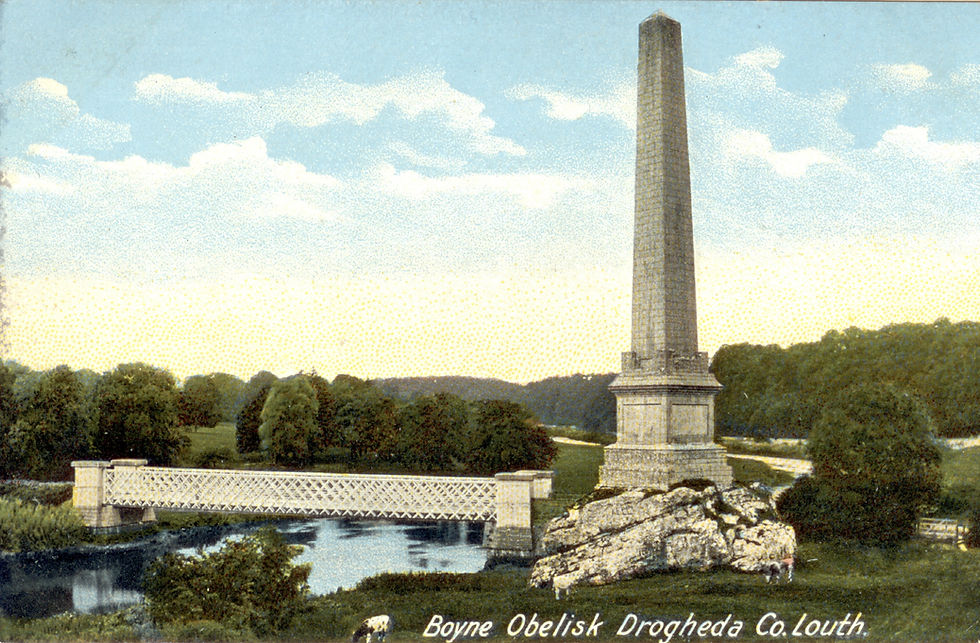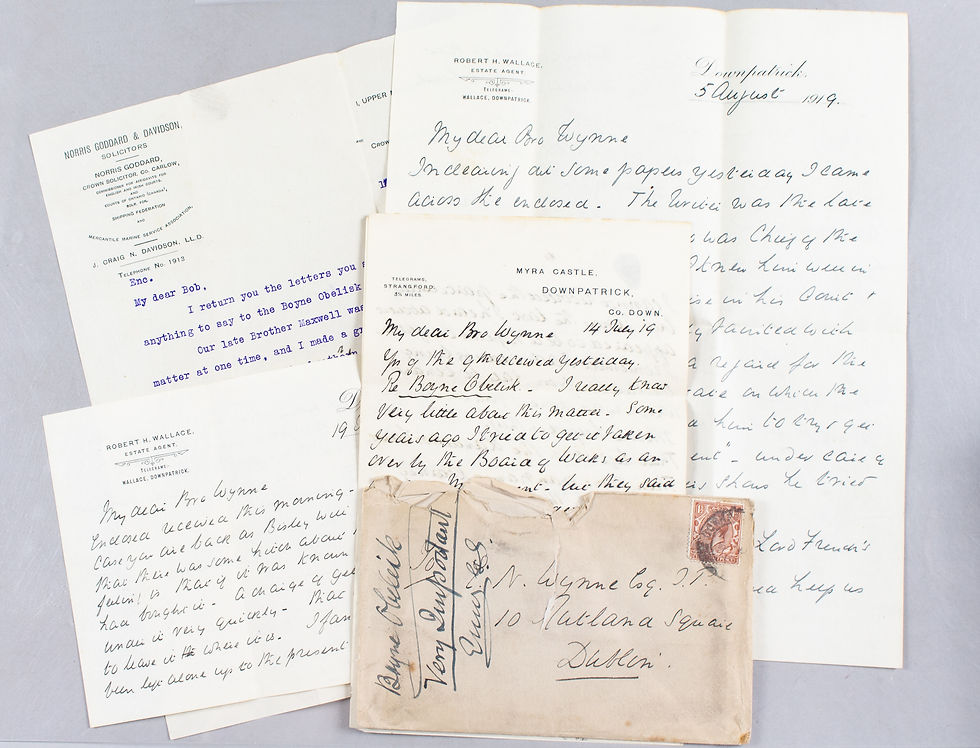At the Grand Orange Lodge of Ireland meeting in June 1923 it was recorded that “one of the most wanton outrages yet perpetrated in the Irish Free State was committed in the early hours of the morning of Thursday, 31 May, 1923….”; the destruction of the Boyne Obelisk.
Erected in 1736 to mark the victory of the Battle of the Boyne, this monument stood over 160ft above the River itself, marking the spot where the main Williamite attack had begun in the centre of the battlefield on 1 July 1690.

Its foundation stone had been laid by the Lord Lieutenant of Ireland, the Duke of Dorset, with the contemporary historian George Story, who had accompanied the Williamite Army, assisting with the project by identifying the spot for its location. Built on a rocky outcrop, it had been where the newly crowned William III had surveyed the enemy and made his final plans for the assault; “His Majesty rode on to the pass at Old Bridge, and stood upon the side of the bank within musket shot of the ford, there to make observation on the enemies camp and posture.”
The inscription on the base recalled the liberty gained during the Glorious Revolution and the victory of the Battle of the Boyne itself. It also referred to the loss of one of William’s main commanders in Ireland, the Duke of Schomberg. It reminded visitors that the “…Duke of Schomberg, in passing this river died bravely in defence of Liberty.”
By the beginning of the Twentieth Century, it was reported that the monument was in need of repair. Discussions took place as to how this could be achieved and whether the monument should be taken into ownership by the Orange Institution.
Correspondence held by the Museum of Orange Heritage sheds some light on proceedings. In 1909 the then Grand Secretary Colonel RH Wallace had written to W F Bailey, Estates Commissioner, to see if the Obelisk could be designated an Ancient Monument and, therefore, in the care of the Board of Works. The Estates Commission agreed that the monument should be designated as such, but the Board of Works objected, much to the annoyance of the Commission. Bailey would later write to Wallace that “…he believed it was the Estates Commission’s role to determine the designation of ancient monuments…” not that of the Board of Works.

Uncertainty continued to surround the future of the Obelisk. As Partitioned loomed, in the aftermath of the Great War, discussions again took place around the sale and possible purchase of both the land upon which the Obelisk stood, and the monument itself. Contested ownership had scuppered such moves in 1911 and again it appeared land disputes would prevent a sale. There was an additional fear. Colonel Wallace, writing to the then Grand Secretary, Edward Gwynn, in July 1919 cautioned about taking the monument into Orange ownership; “I am convinced that if We were to appear in the matter – the Obelisk would be dynamited some dark night.” This line would prove prophetic.
Between 28 June 1922 and 24 May 1923, a bitter civil war convulsed the newly created Irish Free State. Sadly, the violence did not end on 24 May 1923. In the early hours of Thursday 31 May, less than a week after the end of the Irish Civil War, a group of Republicans detonated landmines and explosives attached to the base of the Obelisk. Witness would alter report seeing figures near the site in the days proceeding the explosion, with some suggestion that this is when preparations were made, and holes bored into the base of the monument.
Whoever was responsible (hard-line Republicans or a rogue element of the Irish National Army), this mighty monument to the Liberty gained by the Battle of the Boyne was blown to pieces, with debris scattered over a large area and the adjected road blocked. As Grand Lodge reported at its meeting the following month, “the destruction was complete. Nothing remained of the monument save its rock foundation.”
Unfortunately, the destruction of this monument was not the last act of hostility towards a part of Ireland’s built heritage. Other monuments, statues, and buildings would suffer a similar fate, to a more or lesser extent, as some within the newly created Irish Free State made efforts to remove any aspect of a British and Unionist past within the new country. In this respect history and heritage became the victims of ‘State building!



Kommentare